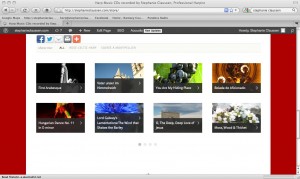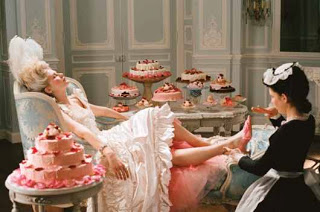A few weeks ago I published an article entitled “The Harpist and her Inner Hit Man,” humorously portraying the life of a freelance harpist. This week I thought I would write about what it really looks like, for me, to make a living playing harp.
When I decided to study Harp Performance at the University of Minnesota with the knowledge that I wouldn’t ever seek a position in a major symphony orchestra, I understood that the descriptor starving artist might feature prominently in my future. I’ve absorbed a few more descriptors into my self-image since then. Small business owner is one of them; secretary, music teacher, and blogger are a few more.
“So what do you do for a living?”
“I’m a harpist.”
“So … what does that mean?” (I always imagine the unvoiced question, “You just play harp and people give you money?”)
Not exactly, but sort of.
Practicing and Performing
Somehow it seems like the gig coming up next is never the one I feel like practicing for. If I’ve agreed to play in a Contemporary Music Concert, inevitably I will be in the mood to throw myself entirely into 18th-century Dussek Sonatinas. If I need an eight-minute prelude by Sunday, I will be inspired to pull out old harp concertos which take much longer than a week to re-polish.

And as hard as I try to direct my own course when it comes to learning new music, the demands of each new engagement win in determining which additional pieces I add to my repertoire. I don’t often get to decide what music runs through my mind all day. I spent one memorable January learning and performing the musical The Fantasticks; when it was finally over I was ecstatic to have my brain to myself again.
I time myself frequently and practice regaling my audiences with the history and composers of the pieces I’m performing. I think my mailman gets confused when he walks up and notices me talking to the window. But I’m okay with the mailman thinking I’m a little odd.
In brief: buying new music, practicing new music, putting together programs for concerts, timing selections, making sure I have all the details for a gig, driving to performances, arriving early to tune and unload the harp, attending rehearsals for ensemble gigs, researching the history of the pieces, altering piano scores or pop works so they work on the harp, and tuning my three harps regularly
Teaching harp

Running a private harp studio in my home involves cleaning! This shouldn’t have surprised me, but I spend a lot more time dusting and sweeping than I ever did before. Teaching also involves plenty of phone calls, lesson planning on a weekly basis, as well as incidental tasks like planning studio recitals and issuing end-of-the-year tax receipts. And I shouldn’t forget to mention the worry that goes into each student throughout the week – How can I express the concept “thumb high” in yet another new way? Does this particular student need easier repertoire because she’s struggling with her current assignments, or does she really just need a challenge? And how much money am I really justified in spending on stickers every month?
In brief: teaching, scheduling, cleaning, worrying, reading articles, books and magazines for music teachers, arranging duets, planning recitals, telling parents and students about upcoming harp events, convincing harpists that they should join the American Harp Society, attending master classes by respected harp teachers, planning lessons, making goals for each student, writing ‘Thank You’ notes, and remembering birthdays
Advertising and Website

Maintaining a presence on the web is a vital part of succeeding as a free-lance artist. Twin Cities professional web consultant Emily Taege designed and built my website. She also does a fantastic job of coaching me on how to increase traffic to my site, how to utilize social media sites like Twitter and Facebook from a professional standpoint, and how to turn intangible web traffic and ‘likes’ into actual income for my harp business. All this takes a lot of time. And in my opinion, websites will only become more and more important to self-employed musicians as our culture becomes increasingly technology-oriented. Engaged couples in my generation are more likely to run a Google search than to buy a magazine to find potential wedding harpists. With this in mind, I spend a considerable amount of time (probably not enough) working on my website.
In brief: blogging, updating my calendar, keeping my website fresh and current, working with companies like CDBaby to make my recordings available on Facebook, MySpace, Amazon, Apple Music, and Spotify, sharing news about my harp business through social media, working to make myself ‘searchable’ to clients who are looking for harpists in the Twin Cities, and compiling a list of good YouTube links that I can send to clients for song suggestions
Keeping Track of It All

This is the category also known as “Everything Else” that goes into making a harp business work.
In brief: responding to e-mails (lots of e-mails), making phone calls, hosting wedding consultations with couples, preparing and sending out contracts, networking, scoping out potential venues for gigs, attending Harp Society events (always an INSPIRATION), planning personal music goals and professional (business) goals, keeping track of income, expenses, and mileage, filing Schedules SE and C, writing myself (and Emily) a quarterly business report, reading the Harp Column, exploring YouTube harp videos, writing press releases, producing harp cds, getting my harps regulated, changing strings, going to concerts, and remembering to renew my harp insurance
And there you have it: my job in a nutshell.
What Does a Freelance Harpist Do All Day | Part 2
Stephanie Claussen is a professional harpist from Minneapolis, Minnesota. She performs on her harp throughout Minnesota in various concerts, recitals, and collaborations with other musicians. Consider signing up for her e-mail newsletter to be notified directly of upcoming performances and important announcements.

